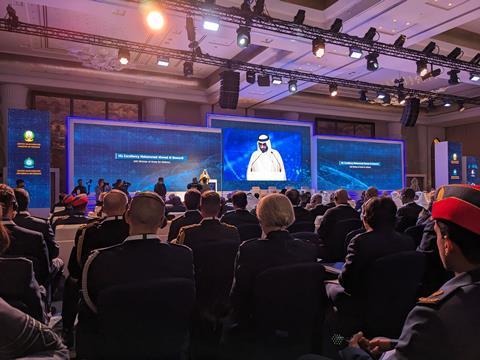In an era marked by rapid technological advancements and the integration of artificial intelligence (AI), Air Force leaders from around the world are facing significant challenges. The Dubai International Air Chiefs’ Conference, held in conjunction with the Dubai Air Show, has become a forum for discussing these challenges and their implications for the training of air force personnel. The traditional hierarchy-based decision-making processes in air forces are under scrutiny, with a growing emphasis on understanding and harnessing AI while ensuring the retention of human decision-making capabilities.
The role of AI in air force decision making
One of the key themes at the conference is the role of AI in transforming Air Force operations. UAE Air Force Brigadier General Azzan Ali A Al Nuaimi, who leads the nation’s air warfare and missile defense center, emphasizes that AI is becoming a pivotal tool for making informed decisions. However, he also stresses the need to strike a balance between trusting AI and preserving the ability of pilots and personnel to think critically and make decisions. Realistic training is identified as a critical component of achieving this balance.
Realistic training for the AI era
Lieutenant General Luca Goretti, chief of staff of the Italian Air Force, shares Italy’s experience with advanced jet training using the Leonardo M-346. This training platform enables cadets to practice against real aircraft and in challenging simulated environments, including threats such as radio frequency emitters, surface-to-air missiles, electronic warfare, and cruise missiles. The acquisition of the Lockheed Martin F-35 has further emphasized the need for innovative training methods. Goretti underscores the necessity of changing mentalities to adapt to data-driven aircraft, where pilots must effectively manage vast amounts of information from the outset.
Collaborative combat aircraft and leading-edge technology
Goretti also highlights the importance of collaborative combat aircraft working alongside manned platforms. In an age where having the best aircraft is insufficient if they are limited in number, leading-edge technology plays a crucial role in achieving critical mass. The integration of advanced technology and collaborative capabilities is seen as a means to enhance the effectiveness of Air Force operations.
The growing challenge of data
Royal Australian Air Force Air Vice-Marshal Glen Braz draws attention to the rapidly expanding availability of data and its impact on decision-making processes. The sheer volume of data, coupled with the need for verifiability, presents a formidable challenge. Braz notes that humans alone will struggle to make sense of this data in a timely manner. Instead, a collaborative approach involving AI and machines will be essential to transform data into actionable intelligence at a speed that is relevant to modern warfare.
Adapting to the future
As the Dubai International Air Chiefs’ Conference delves into the complexities of integrating AI and adapting to technological disruption, Air Force leaders recognize the need to evolve their strategies and training methodologies. The future of air warfare is increasingly data-driven, with AI serving as a critical component. However, the importance of human judgment, critical thinking, and decision-making capabilities remains undiminished.
The balance between AI and human involvement in Air Force operations will continue to be a topic of discussion, as nations strive to maintain their competitive edge in an ever-evolving technological landscape. As AI continues to shape the future of air combat, the ability to adapt, collaborate, and harness the power of data-driven machines will be essential for air forces around the world.





